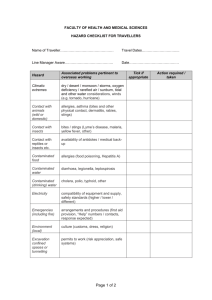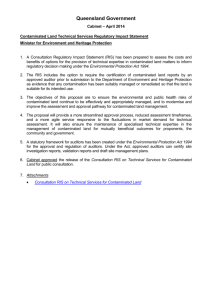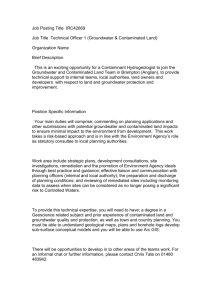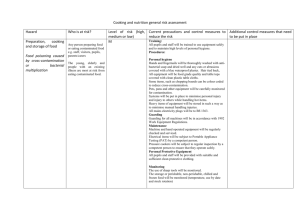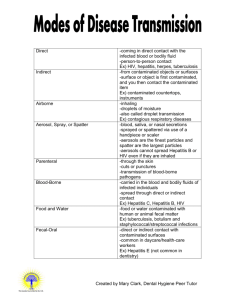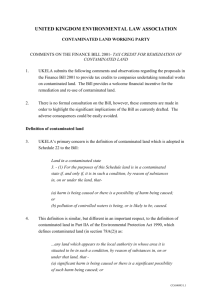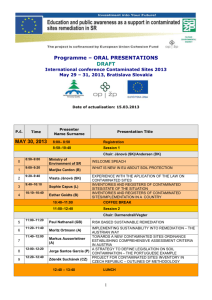Contaminated Land: Cleaning up the Statutory Guidance in England
advertisement
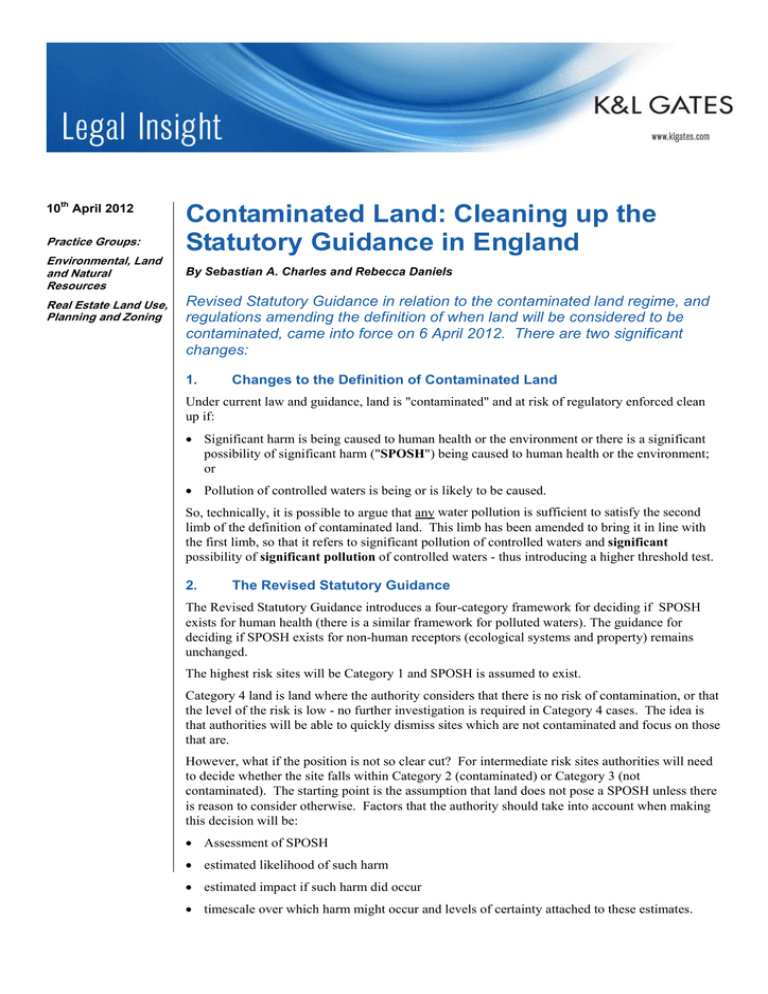
10th April 2012 Practice Groups: Environmental, Land and Natural Resources Real Estate Land Use, Planning and Zoning Contaminated Land: Cleaning up the Statutory Guidance in England By Sebastian A. Charles and Rebecca Daniels Revised Statutory Guidance in relation to the contaminated land regime, and regulations amending the definition of when land will be considered to be contaminated, came into force on 6 April 2012. There are two significant changes: 1. Changes to the Definition of Contaminated Land Under current law and guidance, land is "contaminated" and at risk of regulatory enforced clean up if: Significant harm is being caused to human health or the environment or there is a significant possibility of significant harm ("SPOSH") being caused to human health or the environment; or Pollution of controlled waters is being or is likely to be caused. So, technically, it is possible to argue that any water pollution is sufficient to satisfy the second limb of the definition of contaminated land. This limb has been amended to bring it in line with the first limb, so that it refers to significant pollution of controlled waters and significant possibility of significant pollution of controlled waters - thus introducing a higher threshold test. 2. The Revised Statutory Guidance The Revised Statutory Guidance introduces a four-category framework for deciding if SPOSH exists for human health (there is a similar framework for polluted waters). The guidance for deciding if SPOSH exists for non-human receptors (ecological systems and property) remains unchanged. The highest risk sites will be Category 1 and SPOSH is assumed to exist. Category 4 land is land where the authority considers that there is no risk of contamination, or that the level of the risk is low - no further investigation is required in Category 4 cases. The idea is that authorities will be able to quickly dismiss sites which are not contaminated and focus on those that are. However, what if the position is not so clear cut? For intermediate risk sites authorities will need to decide whether the site falls within Category 2 (contaminated) or Category 3 (not contaminated). The starting point is the assumption that land does not pose a SPOSH unless there is reason to consider otherwise. Factors that the authority should take into account when making this decision will be: Assessment of SPOSH estimated likelihood of such harm estimated impact if such harm did occur timescale over which harm might occur and levels of certainty attached to these estimates. Contaminated Land: Cleaning up the Statutory Guidance If after considering these factors, the authority is still uncertain, it should consider wider factors such as: likely direct and indirect health benefits and impacts of intervention an estimate of what remediation would involve, and whether the benefits would outweigh the economic costs and any impacts on local society The authority is not required to quantify the impacts, nor provide a detailed cost/benefit analysis it is expected to make a broad consideration of the relevant factors. Our view … The change in the definition of contaminated land is welcome, as it brings the test for pollution of controlled waters in line with the test for harm to humans and the environment. It is questionable whether the framework dividing land into four categories will assist authorities in determining whether land is contaminated, and hence whether to take action. It has always been relatively straightforward to determine whether land is high or low risk (in Category 1 or 4). The difficulty lies in deciding what to do about intermediate risk sites (Categories 2 and 3), and that remains. Despite the additional guidance on how to make this decision, it is likely to remain a difficult distinction to draw, and the consequence of action or inaction may have serious consequences for landowners and responsible parties. There may also be financial consequences for local authorities in terms of legal fees, and other costs, if they get it wrong. In any event, the Revised Statutory Guidance needs to be seen in context: The contaminated land regime was only ever intended to be one route to land remediation. An Environment Agency report from 2009 states that 87% of contaminated sites in England have been managed through the planning and development process. So perhaps the focus should remain on continuing to use the planning system as the means to deal with remediation. By choosing not to abolish land remediation relief (See our Alert - UK Land Remediation Relief: Spared the Axe), the Government continued to encourage this approach. Given the budgetary constraints that local authorities are under, the limited resources at their disposal and the fact that in many cases they are a major landowner of contaminated land, or a potentially responsible party, it is doubtful whether the Revised Statutory Guidance will, in reality, have any great impact on the pace at which authorities remediate contaminated land. At K&L Gates LLP we have experience to help clients identify contaminated land liabilities, develop strategies for contaminated sites and to bring forward contaminated sites for redevelopment. If you would like to know more, please contact Sebastian Charles. Authors: Sebastian Charles sebastian.charles@klgates.com +44.(0).20.7360.8205 Rebecca Daniels rebecca.daniels@klgates.com +44.(0).20.7360.8219 2 Contaminated Land: Cleaning up the Statutory Guidance 3
